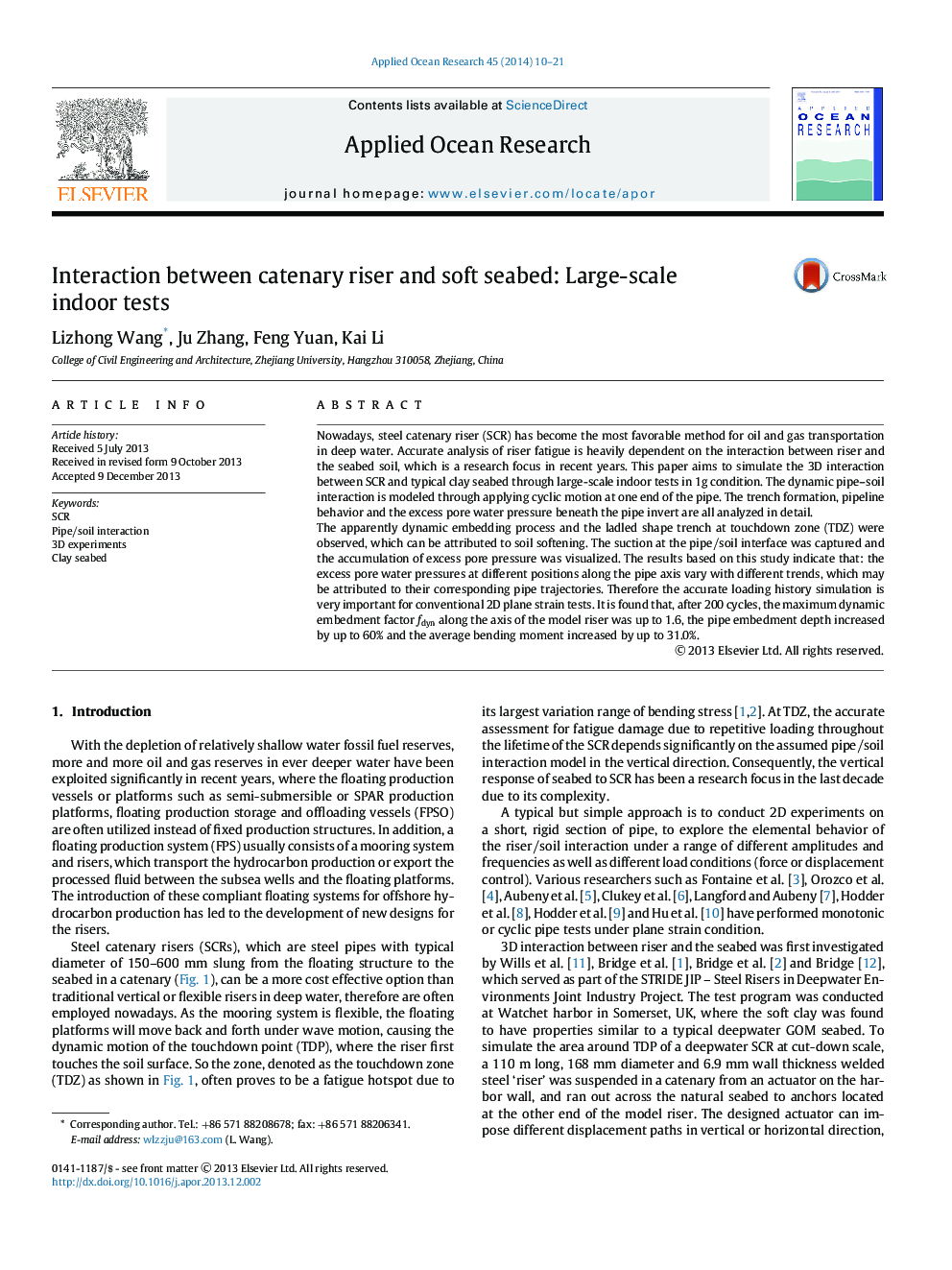| کد مقاله | کد نشریه | سال انتشار | مقاله انگلیسی | نسخه تمام متن |
|---|---|---|---|---|
| 1720069 | 1520258 | 2014 | 12 صفحه PDF | دانلود رایگان |
• We model a large-scale 3D experiment about the riser/clay seabed interaction under vertical repetitive loading.
• The increase of pipe embedment in clay seabed is main due to the remolding and softening of soil beneath the model pipe.
• The further the pipe section was from the TDP, the less heavily it was affected by dynamic lay process.
• Different pipe trajectories at different positions produced completely different excess pore water pressure trends.
• Various pipe locations had different times of duration to accumulate the excess pore pressure before subsequent dissipating.
Nowadays, steel catenary riser (SCR) has become the most favorable method for oil and gas transportation in deep water. Accurate analysis of riser fatigue is heavily dependent on the interaction between riser and the seabed soil, which is a research focus in recent years. This paper aims to simulate the 3D interaction between SCR and typical clay seabed through large-scale indoor tests in 1g condition. The dynamic pipe
• soil interaction is modeled through applying cyclic motion at one end of the pipe. The trench formation, pipeline behavior and the excess pore water pressure beneath the pipe invert are all analyzed in detail.The apparently dynamic embedding process and the ladled shape trench at touchdown zone (TDZ) were observed, which can be attributed to soil softening. The suction at the pipe/soil interface was captured and the accumulation of excess pore pressure was visualized. The results based on this study indicate that: the excess pore water pressures at different positions along the pipe axis vary with different trends, which may be attributed to their corresponding pipe trajectories. Therefore the accurate loading history simulation is very important for conventional 2D plane strain tests. It is found that, after 200 cycles, the maximum dynamic embedment factor fdyn along the axis of the model riser was up to 1.6, the pipe embedment depth increased by up to 60% and the average bending moment increased by up to 31.0%.
Journal: Applied Ocean Research - Volume 45, March 2014, Pages 10–21
